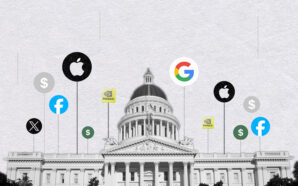Shelly Palmer
Augmented Reality (AR) is not new, but thanks to Pokémon Go it is newly relevant. The game has broken every record for adoption, users, and time spent, and it has given Nintendo a much-needed boost in both buzz and market cap – oh, and it’s super-fun to play. Even if you never download the game or even look at a screenshot, here are a few things about Pokémon Go’s epic launch that may move you from “I couldn’t care less” to “Hmm … that’s interesting.”
Pokémon Go Is Not Technically AR
You won’t get in trouble for calling Pokémon Go “AR,” but be prepared for some pushback from tech-savvy drinking buddies. Pokémon Go is as much like AR as Facebook 360 videos are like VR (virtual reality). At best it is pseudo-AR, but this distinction will matter only when you ask your developers to build “Fill-in-your-brand-name-here Go” and you find out how Pokémon Go actually works.
Unlike Magic Leap or Google’s Tango or Microsoft’s HoloLens, the characters in Pokémon Go do not react to their environments or have a sense of space. This is because it uses your smartphone’s location features to determine where you are, and then simply superimposes animated characters over the image from your rear-facing camera. Pokémon Go has more in common with location-based apps than it does with the true AR experiences that are just over the horizon. That said, Pokémon Go is a precursor to full-featured AR, and it has brought the promise of the technology to everyone’s attention.
AR, VR and MR
AR superimposes computer-generated images (text, graphics, other images, etc.) over your field of vision to “augment” your experience. So far, the most common ways to experience AR are by using smartphones or by wearing purpose-built goggles or glasses that mimic a heads-up display. Because it combines your actual location with data and images that enhance your experience, AR has thousands of practical uses.
VR immerses you in a simulated or virtual environment. It is excellent for game play, vocational training and several other kinds of entertainment. At present, the technology requires the user to wear a headset and headphones that isolate the user from the outside world. Most VR experiences require the user to be seated in a safe space or to wear a safety harness on a 360 treadmill or to be in the equivalent of a padded room. Some people believe that this limitation will prevent VR from going mainstream. I think it’s too early for that kind of declarative statement because pure VR experiences are magical and will ultimately provide human experiences that are like being in the “Matrix.”
MR (mixed reality) is a term that Magic Leap and others have been using to describe a technology that mixes VR with the real world. If Magic Leap or HoloLens or Tango did Pokémon Go, gamers would lose their minds! The characters would have a sense of space, react to their environments, hide behind things, and much more. MR allows photorealistic enhancements that will alter your perceptions in significant, visceral ways. You might see an ancient ruin as a thriving city or a see a room with different furniture in it or with different colored walls and draperies – the creative possibilities for MR are infinite.
Importantly, MR is not here yet. It requires sensors that can map your environment, powerful local processing, copious amounts of wireless bandwidth, furiously fast computation in the cloud and practically instant access to vast amounts of data.
1st-Party Data Is Key
One of the most important things about Pokémon Go is its backstory. The game was not purpose built; it was a modification and re-skinning of Ingress, an existing data-driven massive multiplayer game. Niantic, the company that built Pokémon Go, was founded by John Hanke, who also founded Keyhole (the start-up that Google acquired to accelerate the creation of Google Earth). The database of Pokéstops and Gym coordinates was substantially taken from a database created by Ingress gamers.
Pokémon Go could not exist without this extensive, 1st-party map data. So if you’re thinking of knocking off the game, think again. Unless Niantic is willing to sell or grant access to its database of landmarks, your version of “Fill-in-your-brand-name-here Go” is going to be almost impossible to create.
What’s Next?
Pokémon Go is a good start. It has everyone talking about AR, which immediately leads to a discussion about VR, which ultimately concludes with a renewed sense of purpose to achieve MR. While you might not be able to create “Fill-in-your-brand-name-here Go,” you can start thinking about great uses of AR from your supply chain all the way through to your consumer touchpoints (products, marketing, advertising, branded entertainment, customer service, etc.).
One Last Thing
Everyone has a theory about why Pokémon Go has been so successful, so quickly. There is no one reason. But consider these elements before making your decision to jump into AR: (1) Niantic had over five years of experience with Ingress, a game that is almost identical to Pokémon Go. (2) There was a massive 1st-party database that enabled the user experience. (3) They leveraged Pokémon, one of the most popular game brands in the world. (4) Everyone in the target market has and knows how to use a network-connected smartphone capable of providing an emotionally satisfying user experience.
I could go on listing elements of this “perfect storm,” but there is no need. The overarching reason that Pokémon Go is on your radar is that it is super-fun to play.
Which raises the question, is the popularity of Pokémon Go really about AR, or is it just a decade of pent-up Pokémon demand among millennials unleashed by wireless networks and a great app? Your guess is as good as mine.
About Shelly Palmer
Named one of LinkedIn’s Top 10 Voices in Technology, Shelly Palmer is President & CEO of Palmer Advanced Media, a strategic advisory and business development practice focused at the nexus of technology, media and marketing with a special emphasis on data science and data-driven decision making. He is Fox 5 New York’s on-air tech and digital media expert and a regular commentator on CNBC and CNN. Follow @shellypalmer or visit shellypalmer.com or subscribe to our daily email http://ow.ly/WsHcb






